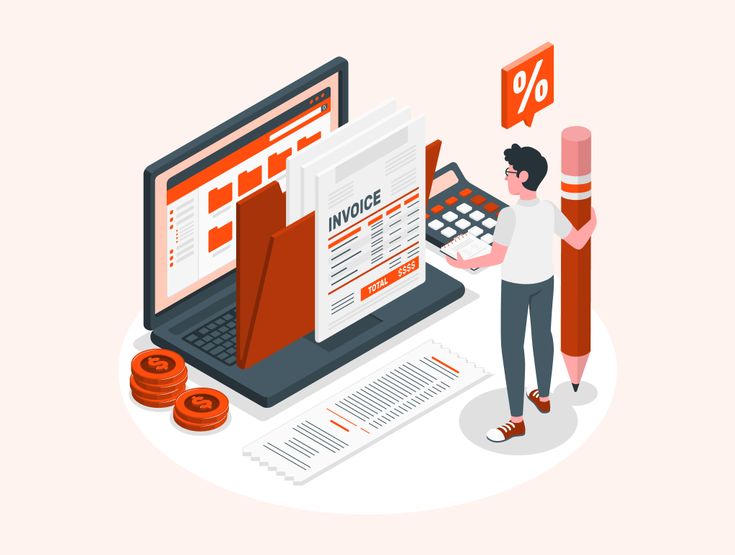If invoicing feels like a necessary evil, you’re leaving money—and sanity—on the table. A modern system doesn’t just spit out PDFs; it accelerates approvals, reduces disputes, and gives you a clear picture of cash flow. If any of the signs below sound familiar, it’s upgrade o’clock.
You’re Still Using Word or Excel
Docs and Excel invoice templates are fine for invoice drafts, not systems. Manual formulas break, layouts drift, and version control gets messy. There’s no audit trail, no automatic numbering, and certainly no one-click payment. Every new invoice becomes a small design project. The fix: move to an invoicing tool (or your accounting platform’s built-in module) with locked templates, auto-calc fields, and PDF output that doesn’t shift when your client opens it on a phone.
Quick win: Standardize an INV-YYYY-#### numbering scheme, protect formulas, and stop sending editable files—export to PDF.
Clients Are Confused or Delaying Payments
Confusion is code for “I don’t see what I owe or how to pay it.” If clients ask where the total is, what the due date means, or how to pay without setting up an account, your invoice is doing too little. A modern invoice places the grand total and due date (a real calendar date) front and center, with one-click payment options and clear terms (late fee, early-pay discount, accepted methods).
Quick win: Add a visible “Pay Now” button, show subtotal → tax/fees → credits → bold total, and include concise instructions for bank transfer with the exact reference to use.
You’re Manually Typing Each Invoice
Retyping client details and line items is slow and brittle. Typos creep in, rates go out of date, and you waste time hunting the last wording you liked. Modern systems pull client data from your CRM, auto-suggest common services, and remember your tax treatments.
Quick win: Create a reusable catalog: item names, descriptions, unit rates, and tax codes. Let your system fill the invoice—your job becomes editing, not composing.
You Don’t Know Who Paid and Whos Didn’t
If “Did Acme pay?” requires digging through emails and bank statements, you don’t have a system—you have a scavenger hunt. You need a live status view: sent, viewed, paid, overdue. Better yet, payments that auto-reconcile back to the specific invoice via unique references and webhooks.
Quick win: Require payers to include the invoice number in bank memos; configure your tool to match transactions automatically. Set 7/14/30-day dunning reminders that escalate from friendly to firm without you rewriting emails.
You Miss Deadlines or Send Invoices Late
Late invoices lead to late cash. If billing slips because you’re busy, you need automation and a cadence. Recurring invoices for retainers, scheduled sends for month-end, and reminders before due dates keep cash flow predictable.
Quick win: Block a recurring calendar slot for invoicing, or better—set your system to auto-generate drafts on the same day each month and ping you (Slack/email) to review and send.
Invoices Look Inconsistent or Dated
Every invoice should look like it came from the same, competent business. Mismatched fonts, off-brand colors, and shifting column widths scream “ad hoc.” Modern templates enforce hierarchy (headers, line items, totals) and accessibility (high contrast, 11–12pt text, mobile-friendly spacing). Consistency speeds approvals because approvers know exactly where to look.
Quick win: Lock a single template per billing model (hourly, fixed-fee, retainer). Use one accent color, one body font, and keep the totals box in the same place—always.
You Feel Overwhelmed Every Time You Invoice
That knot in your stomach? It’s unstructured work. A better system replaces dread with routine: clear templates, a folder structure, and a lightweight tracker. You’ll know what to do, when, and where everything lives.
Quick win: Create a mini SOP:
- Generate invoice templates.
- Attach proof (PO, timesheet, delivery note).
- Send PDF + portal link.
- Log in tracker (amount, due date, status).
- Schedule follow-ups.
Close the loop by moving paid quick invoices to a “Paid” folder and pasting the transaction ID into your tracker.
Bottom line: Upgrading your invoicing isn’t about shiny software—it’s about fewer errors, faster payments, and a calmer month-end. Start with locked templates, automate the repetitive parts, and give yourself a real-time dashboard of what’s owed and what’s paid. Your cash flow (and future self) will thank you.










